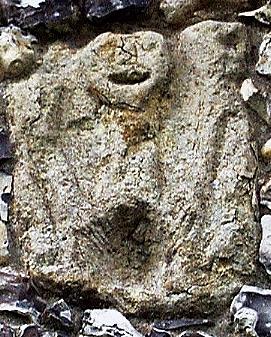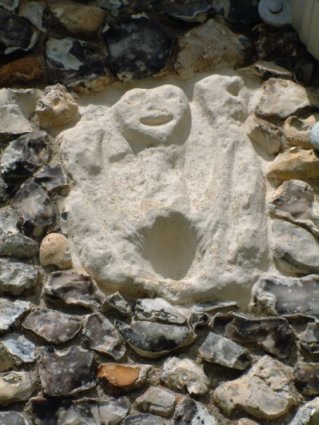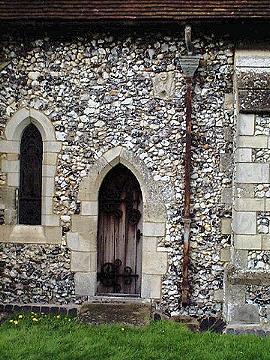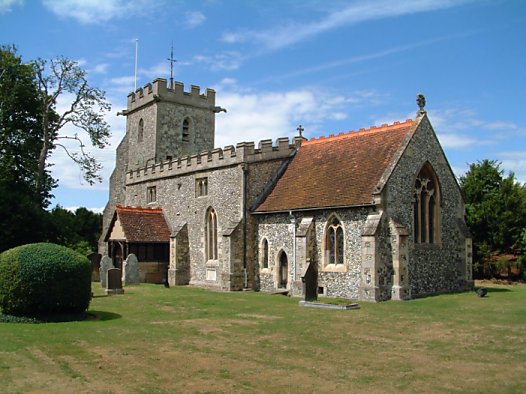Contents


Much Rubbed
Images of lust reports this sheela as being “much rubbed?”. I find myself agreeing with the question mark. Unlike the Buncton Sheela this carving could have been moved to it’s current position, around 10 ft of the ground, from a more accessible position. You can see from the photograph that the stone is unlike any of the other surrounding flint nodules and much weathered. The vaginal area on the carving is a wide deep oval, fingers are lightly incised on either side stretching a fair way into the vulva. The fingers do not appear shortened or “rubbed out” in any way in fact they are rather long and stand out from the rest of the carving. If the carving has suffered from rubbing it would have happened in two ways.
1. The finger could have been rubbed up and down this would result in a deeper line within the vulva which is not present.
2. The finger could have been rubbed in a circular motion around the vulva. If this type of rubbing took place then you would expect the vaginal area to grow wider which indeed it is, however the fingers would have gradually been “rubbed out” which they most certainly are not.
From what I’ve seen of the carving it appears that the image was carved this way deliberately. It’s pretty hard to deny that the large vagina immediately grabs your attention. Jorgen Andersen in his book the “Witch on the Wall” describes the figure as being much rubbed with the fingers being re-carved at some point. I’ll leave it to you which theory you choose to subscribe to.
Indian Tradition
The comedian Mike Harding who is interested in Green Men came across a tradition of genital rubbing on Kali statues in India. The rubbing however was in an up and down motion which makes sense given the narrow vertical nature of the vulval slit. If the carving has been rubbed it has been done in quite a different way.
The carving is quite badly weathered the face is deeply cracked and the rest of the carving is badly pitted. It could do with being moved inside the church to protect it from elements. A booklet describing the history of the church can be found inside but makes no mention of the Sheela at all. Comments in the visitor book show that, at least a few people have visited the church because of the Sheela and it seems a shame that it is likely to gradually weather away to nothing through neglect. If you do visit the church please make a comment in the book that you’d like to see it conserved in some way. Unlike other carvings on the church the Sheela is fairly crude her friendly grin providing a contrast to the other victorian gargoyles which can be found on the tower and on the back of the church.
The parish of Buckland lies around 15 miles north of High Wycombe. It is very small village the houses of which crowds around the large parish church of All Saints. Buckland is very near the Lower Icknield Way one of the main roads of Celtic Britain. The history of the church stretches as far back as 1067 where it is mentioned in the Domesday Book. Interestingly another sheela also lies on the Icknield way further north at the cave in Royston
The Robbers
Jorgen Andersen in the Witch on the Wall relates a story originally from a leaflet in the Church that the sheela figure is actually one of two robbers executed at Hang Hill some two miles from the church. The leaflet also described the figure as having its arms raised (despite the fingers carved into the vulva). Interestingly the figure at Holdgate also has a tradition of being the image of an executed felon. The figure was described by the sexton in 1980 “The last man to be hanged on Hangman’s Hill” (Weir and Jerman page 151)
John Harding


J